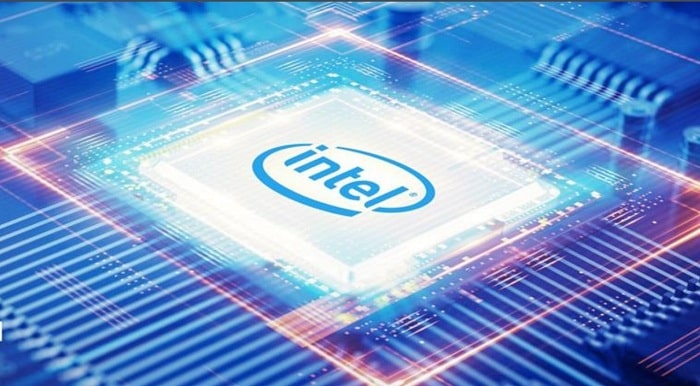Unlocking the full potential of 5G requires transforming network infrastructure from core to edge. As the world’s leading network silicon provider, Intel is at the forefront of driving this transformation. the company made a sweeping set of hardware and software announcements, including the launch of the new Intel Atom® P5900, a 10nm system-on-chip (SoC) for wireless base stations, which is a critical early deployment target for 5G networks.
“As the industry makes the transition to 5G, we continue to see network infrastructure as the most significant opportunity, representing a $25 billion silicon opportunity by 2023,” said Navin Shenoy, executive vice president and general manager of the Data Platforms Group at Intel. “By offering customers the fastest and most effective path to design, deliver and deploy 5G solutions across core, edge and access, we are poised to expand our leading silicon position in this growing market.”
Unmatched Portfolio for 5G Infrastructure
As the promise of 5G takes hold, customers are demanding the increased performance and flexibility they need to rapidly deliver services with lower latency where they are needed most. In this light, Intel announced a number of firsts including:
- Launching the Intel Atom P5900 platform, the first Intel architecture-based 10nm SoC for wireless base stations: With the launch of the Intel Atom P5900, the company is extending Intel architecture from the core to access and all the way to the farthest edge of the network. Intel now expects to be the leading silicon provider in base stations by 2021, a year earlier than first predicted. As a highly integrated 10nm SoC, the Intel Atom P5900 is designed to meet critical 5G network needs, including high bandwidth and low latency to deliver what’s required for 5G base stations today and in the future. The product augments Intel’s rich silicon portfolio for network environments and introduces Intel silicon as the foundation for the wireless base stations market, with 6 million 5G base stations forecasted through 2024. Intel is working with leading providers to deliver this product as part of their future-differentiated solutions in market.
- New 2nd Gen Intel® Xeon® Scalable processors: As the foundation for data platform infrastructure with over 30 million units sold, Intel Xeon Scalable processors have led the transformation of the network. This year, 50% of core network deployments are transforming to virtualized networks, with the expectation to grow beyond 80% by 2024, fueled by 5G. The new 2nd Gen Intel Xeon Scalable processors launched deliver an average of 36% more performance and an average of 42% more performance per dollar² than the prior generation Intel® Xeon® Gold and increased value for customers across their cloud, network and edge needs. In addition, Intel Xeon Scalable helps protect the integrity of the data and the platform with hardware-enhanced security and built-in encryption accelerators. In conjunction, Intel introduced 18 updated Select Solutions supporting these new processors across customer-prioritized workloads.
- Introducing “Diamond Mesa,” Intel’s first next-generation structured ASIC for 5G network acceleration: “Diamond Mesa” (code name) is designed to complement Intel’s unmatched portfolio of processors and FPGAs delivering the high performance and low latency required for 5G networks. Structured ASICs like Diamond Mesa provide a minimum-risk optimization path for workloads that do not require the full programmability of FPGAs, targeting double the performance efficiency versus the prior generation, and uniquely position Intel as the only provider delivering a full silicon platform foundation for network infrastructure. Diamond Mesa is open to early access customers.
- Introducing the Intel® Ethernet 700 Series Network Adapter with hardware-enhanced Precision Time Protocol, the first 5G network-optimized Ethernet NIC: The Ethernet 700 series (code-named “Edgewater Channel”) is Intel’s first 5G-optimized network adapter, offering GPS-based cross-network service synchronization with hardware-enhanced Precision Time Protocol (PTP). Latency requirements across 5G network implementations have challenged existing Ethernet technology, especially in edge servers. Maintaining accurate time synchronization across the network at a cost-effective price point, however, is one avenue to help address application latency. The Ethernet 700 series adapter increases the timing precision required for 5G networks through a combination of hardware and software enhancements. Edgewater Channel is sampling now and will enter production in 2020’s second quarter.
New Software Investments
Intel expands its industry-leading edge computing software toolkits to accelerate time-to-market innovation for its customers and partners with new capabilities integrated into the Open Network Edge Services Software (OpenNESS) toolkit. OpenNESS now supports standalone 5GNR and Enhanced Platform Awareness (EPA) deployments, giving customers the flexibility to easily deploy their choice of cloud-native edge microservices. Intel is delivering customized OpenNESS experience kits to accelerate custom 5G deployments. OpenNESS complements Intel’s OpenVINO™ and Open Visual Cloud for edge computing development needs.
Unrivaled Ecosystem Collaborations
Technology innovation requires deep collaboration across industry innovators that build on each other’s contributions. Given its rich heritage in leading technology transitions, Intel is in a unique position to accelerate collaboration across its customers and partners. Intel has announced strategic collaborations with industry leaders, including Altiostar, Dell, Deutsche Telecom, HPE, Lenovo, QCT, Rakuten, VMware and ZTE to advance network infrastructure capability and speed edge solutions in the market.
Intel has been at the forefront of technology innovation for 51 years. By delivering the broadest silicon portfolio for 5G network infrastructure, the company continues to open a world of opportunity for its customers and partners.
About Intel
Intel a leader in the semiconductor industry, is shaping the data-centric future with computing and communications technology that is the foundation of the world’s innovations. The company’s engineering expertise is helping address the world’s greatest challenges as well as helping secure, power and connect billions of devices and the infrastructure of the smart, connected world – from the cloud to the network to the edge and everything in between.




















